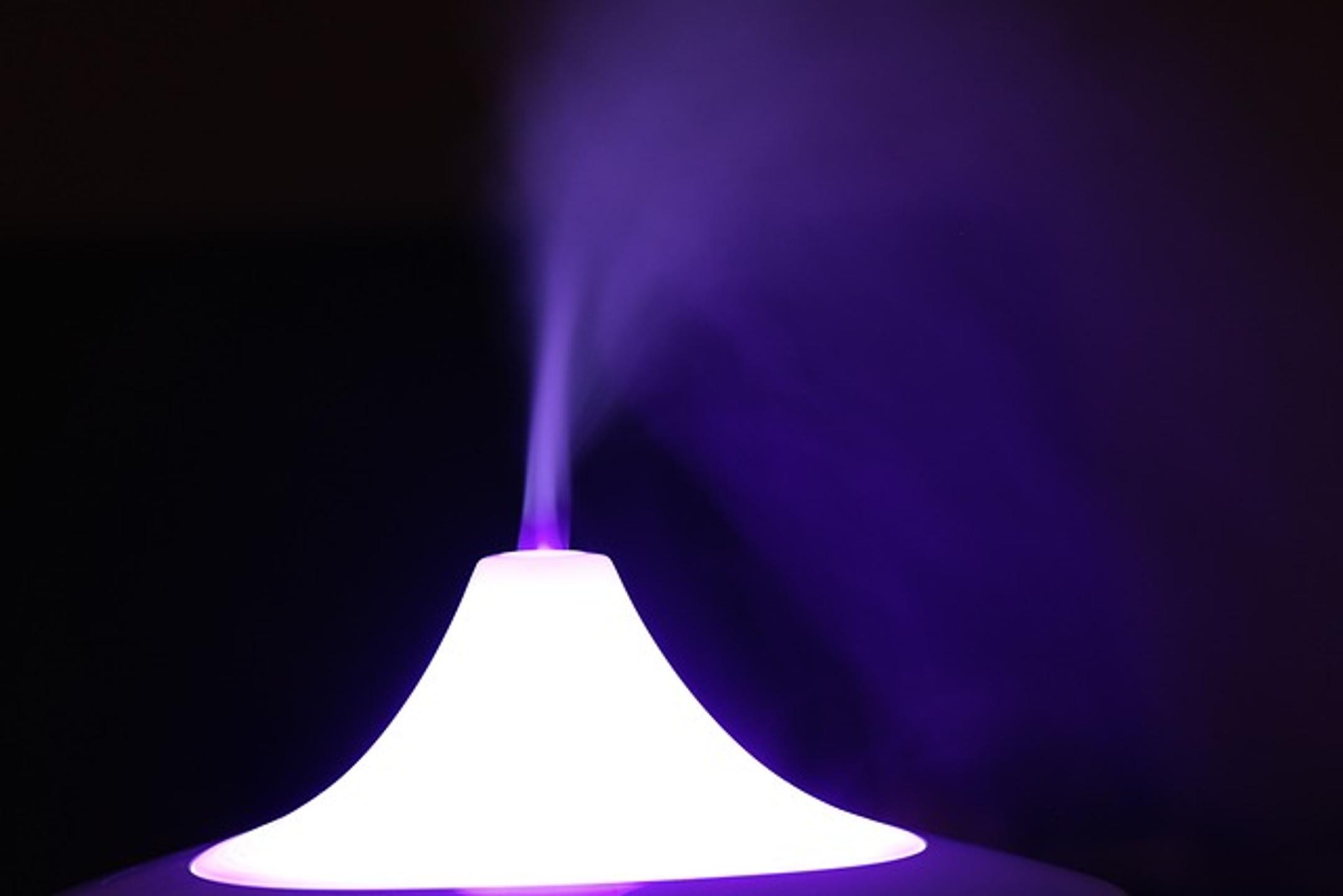Do Humidifiers Help with Allergies?
Introduction
Allergies can disrupt your daily life, causing discomfort and irritation. Various environmental factors, including air quality, play a significant role in exacerbating allergy symptoms. Many people seek effective solutions, and humidifiers often come up as a potential aid. But do humidifiers help with allergies? Here, we’ll explore how humidifiers can impact allergy symptoms, the mechanisms behind their functions, and tips for choosing and using the right humidifier effectively.

How Allergens Affect Us
Allergens like pollen, dust mites, and pet dander are common triggers for allergy sufferers. When inhaled, these allergens can cause a range of reactions including sneezing, itchy eyes, congestion, and even asthma attacks. The body perceives these particles as harmful invaders and responds by releasing antibodies, leading to inflammation and other uncomfortable symptoms. Dry air can exacerbate these issues by irritating the respiratory tract and making the skin and nasal passages more susceptible to allergens.
In addition, dry conditions can have an indirect impact by promoting the spread of certain allergens. Dust and pollen can remain suspended in the air longer, increasing inhalation risk. Moreover, dry indoor environments can contribute to the proliferation of dust mites, a common allergen, as they thrive in low-humidity conditions. Understanding how allergens affect our bodies under different humidity levels sets the stage for evaluating the potential benefits of humidifiers for allergy sufferers.

How Humidifiers Work
Types of Humidifiers
Humidifiers come in various types, each with unique mechanisms designed to add moisture to the air. The main types include cool mist, warm mist, evaporative, and ultrasonic humidifiers. Cool mist humidifiers, as the name suggests, release a cool vapor, while warm mist models produce a heated mist. Evaporative humidifiers use a fan to evaporate water, and ultrasonic versions use high-frequency vibrations to create mist.
Mechanism of Action
The primary goal of a humidifier is to introduce moisture into the air, thereby increasing humidity levels. Each type of humidifier has its way of accomplishing this: evaporative humidifiers use a wick to absorb water and then blow air through it; ultrasonic models vibrate at high frequencies to create tiny droplets; warm mist humidifiers heat water to produce steam. By increasing humidity, these devices help prevent the air from becoming too dry, which can aggravate allergy symptoms.
Ideal Humidity Levels
To reap the benefits of humidifiers, maintaining ideal humidity levels is crucial. The recommended indoor humidity level is between 30% and 50%. Levels above 50% can encourage mold growth, dust mites, and other allergens, worsening allergies. Thus, controlling and monitoring humidity levels is essential for ensuring that a humidifier helps rather than hinders in managing allergies.
The Impact of Humidifiers on Allergies
Relief from Dry Air Symptoms
Humidifiers can offer significant relief from symptoms caused by dry air. By adding moisture to the environment, they help soothe irritated nasal passages and throats, reducing coughing and discomfort. Moist air also helps keep the mucous membranes in the nasal passages moist, making them more effective at trapping allergens before they can be inhaled deeper into the respiratory system.
Benefits for Asthma and Rhinitis
Beyond general allergy relief, humidifiers can be particularly beneficial for individuals with asthma and allergic rhinitis. These conditions are often exacerbated by dry air, leading to symptoms like wheezing, coughing, and nasal congestion. A properly used humidifier can help maintain optimal moisture levels, making it easier to breathe and reducing the frequency of asthma attacks and rhinitis flare-ups.
Reducing Dust and Mold Allergens
One of the most significant ways humidifiers can help with allergies is by reducing the presence of dust and mold allergens. While excessive humidity can foster mold growth, maintaining balanced humidity levels can inhibit the spread of dust mites and mold spores. A humidifier’s consistent moisture addition can make the environment less conducive to these allergens’ proliferation, leading to fewer allergens in the air and reduced allergy symptoms.
Choosing the Right Humidifier
Cool Mist vs. Warm Mist
When choosing a humidifier, a common question is whether to opt for a cool mist or a warm mist model. Cool mist humidifiers are generally safer for households with children and pets because they don’t use heating elements. They are also more energy-efficient. Warm mist humidifiers, on the other hand, can eliminate more bacteria and allergens due to their boiling process, making them effective in a different way.
Evaporative vs. Ultrasonic
Evaporative humidifiers use a fan and wick system to disperse moisture, which can be better for adding significant amounts of moisture over larger areas. Ultrasonic humidifiers are quieter and use high-frequency vibrations to create a fine mist, making them ideal for smaller rooms or bedrooms. Each option has its pros and cons, so consider your specific needs and room size when making a choice.
Portable vs. Whole-House
Portable humidifiers are versatile and economical, perfect for single rooms or small spaces. They are easy to move and require minimal installation. Whole-house humidifiers, integrated into the HVAC system, provide consistent humidity throughout an entire home. While more expensive, they offer more comprehensive control over indoor air quality. Consider the scope of your needs and the convenience factor when deciding between these options.
Tips for Using Humidifiers Effectively
Optimal Placement
Where you place your humidifier can significantly affect its performance. Position it in a central location within the room to ensure even moisture distribution. Keep it away from walls and furniture to prevent moisture buildup, and place it at least a few feet off the ground for better circulation.
Best Practices
For best results, follow these practices:
1. Use distilled or demineralized water to minimize mineral deposits and bacterial growth.
2. Adjust settings according to the room’s size and humidity levels.
3. Use a hygrometer to monitor humidity and maintain levels between 30% and 50%.
Cleaning and Maintenance
Regular cleaning is essential to prevent mold and bacteria buildup. Empty the tank and dry all surfaces daily. Perform a more thorough cleaning with a mild disinfectant weekly. Replace filters as recommended by the manufacturer to ensure efficient operation. Proper maintenance not only extends the humidifier’s lifespan but also ensures that it provides the maximum health benefits.

Conclusion
Humidifiers can be a valuable tool in managing allergy symptoms, by maintaining optimal humidity levels, easing dry air symptoms, and reducing the presence of dust and mold allergens. Choosing the right type of humidifier and using it effectively maximizes these benefits. While humidifiers are not a cure-all, they can significantly enhance your indoor air quality and comfort when used correctly. Balancing and maintaining the right humidity levels are key to leveraging their full potential in alleviating allergy symptoms.
Frequently Asked Questions
Can Humidifiers Make Allergies Worse?
Yes, if not used properly, humidifiers can worsen allergies by promoting mold and dust mite growth. Ensure humidity levels are between 30% and 50%.
How Often Should I Clean My Humidifier?
Clean your humidifier daily and perform a deep clean weekly to prevent mold and bacteria buildup.
What Type of Water Should I Use in My Humidifier?
Use distilled or demineralized water to minimize mineral deposits and reduce the risk of bacterial growth.
